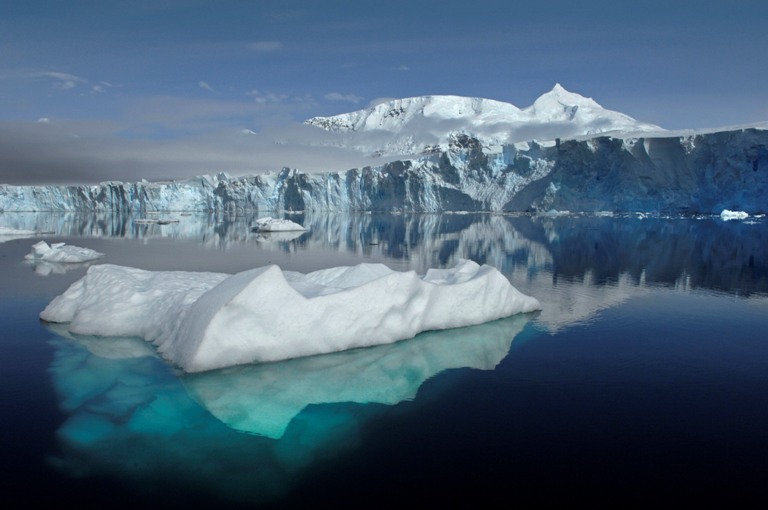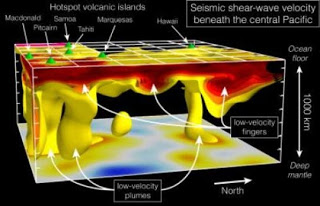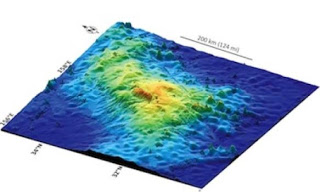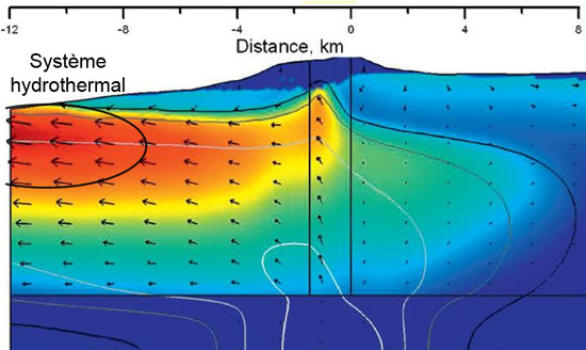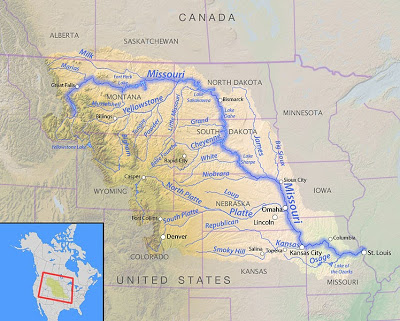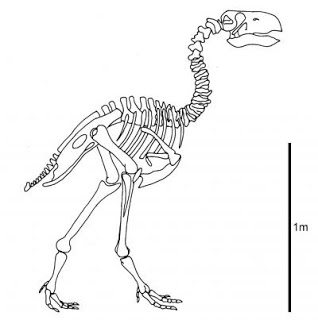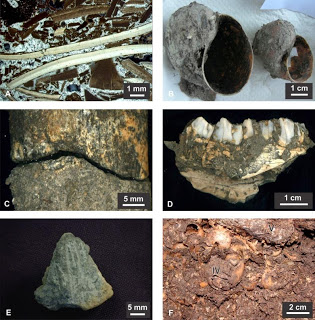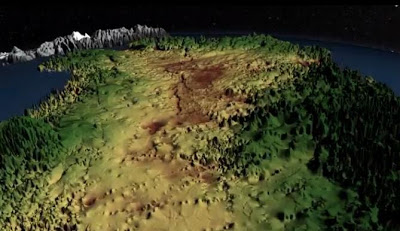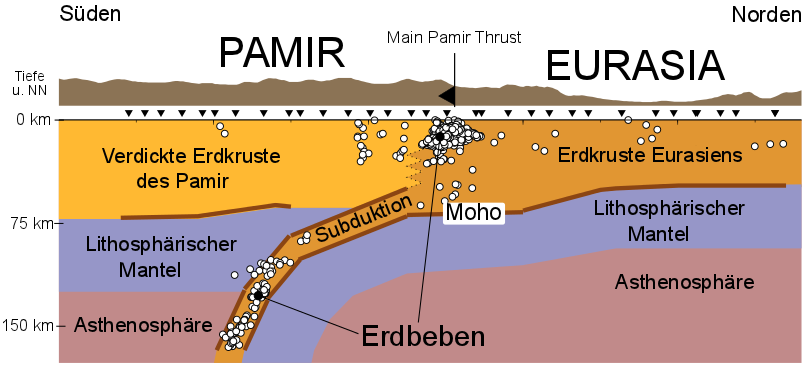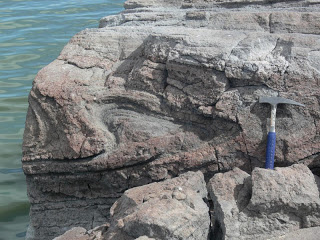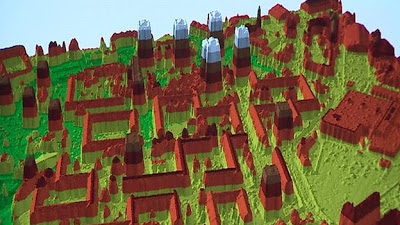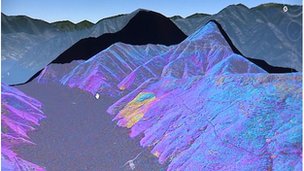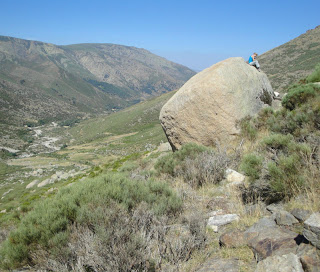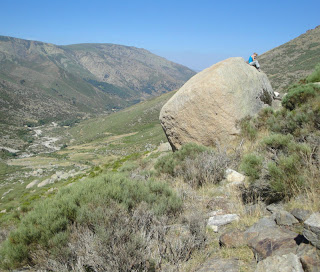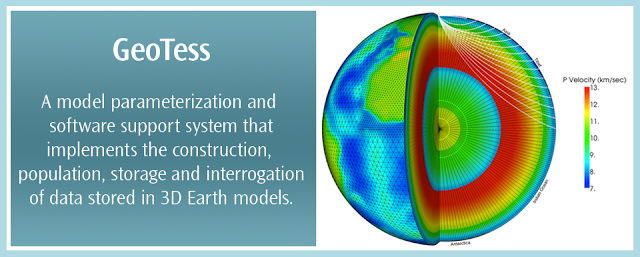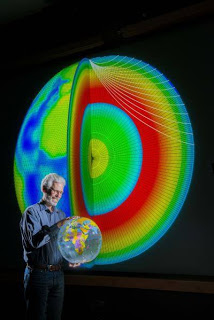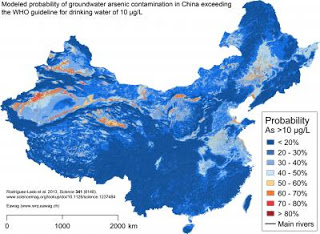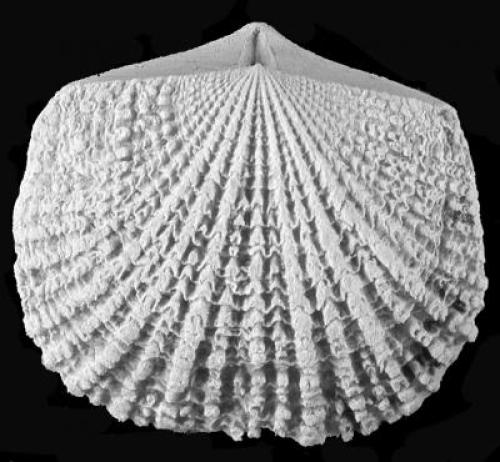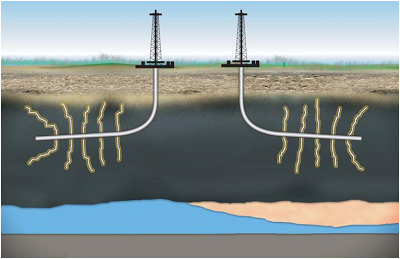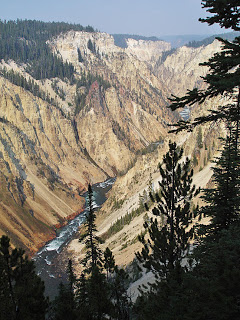Under the sponsorship of the National Nuclear Security Administration’s Office of Defense Nuclear Nonproliferation R&D, Sandia National Laboratories and Los Alamos National Laboratory have partnered to develop a 3-D model of the Earth’s mantle and crust called SALSA3D, or Sandia-Los Alamos 3D. The purpose of this model is to assist the US Air Force and the international Comprehensive Nuclear-Test-Ban Treaty Organization (CTBTO) in Vienna, Austria, more accurately locate all types of explosions.
The model uses a scalable triangular tessellation and seismic tomography to map the Earth’s “compressional wave seismic velocity,” a property of the rocks and other materials inside the Earth that indicates how quickly compressional waves travel through them and is one way to accurately locate seismic events, Sandia geophysicist Sandy Ballard said. Compressional waves — measured first after seismic events — move the particles in rocks and other materials minute distances backward and forward between the location of the event and the station detecting it.
SALSA3D also reduces the uncertainty in the model’s predictions, an important feature for decision-makers who must take action when suspicious activity is detected, he added.
“When you have an earthquake or nuclear explosion, not only do you need to know where it happened, but also how well you know that. That’s a difficult problem for these big 3-D models. It’s mainly a computational problem,” Ballard said. “The math is not so tough, just getting it done is hard, and we’ve accomplished that.”
A Sandia team has been writing and refining code for the model since 2007 and is now demonstrating SALSA3D is more accurate than current models.
In recent tests, SALSA3D was able to predict the source of seismic events over a geographical area that was 26 percent smaller than the traditional one-dimensional model and 9 percent smaller than a recently developed Regional Seismic Travel Time (RSTT) model used with the one-dimensional model.
GeoTess software release
Sandia recently released SALSA3D’s framework — the triangular tessellated grid on which the model is built — to other Earth scientists, seismologists and the public. By standardizing the framework, the seismological research community can more easily share models of the Earth’s structure and global monitoring agencies can better test different models. Both activities are hampered by the plethora of models available today, Ballard said. (*)
“GeoTess makes models compatible and standardizes everything,” he said. “This would really facilitate sharing of different models, if everyone agreed on it.”
When an explosion goes off, the energy travels through the Earth as waves that are picked up by seismometers at U.S. and international ground monitoring stations associated with nuclear explosion monitoring organizations worldwide. Scientists use these signals to determine the location.
They first predict the time taken for the waves to travel from their source through the Earth to each station. To calculate that, they have to know the seismic velocity of the Earth’s materials from the crust to the inner core, Ballard said.
“If you have material that has very high seismic velocity, the waves travel very quickly, but the energy travels less quickly through other kinds of materials, so it takes the signals longer to travel from the source to the receiver,” he says.
For the past 100 years, seismologists have predicted the travel time of seismic energy from source to receiver using one-dimensional models. These models, which are still widely used today, account only for radial variations in seismic velocity and ignore variations in geographic directions. They yield seismic event locations that are reasonably accurate, but not nearly as precise as locations calculated with high fidelity 3-D models.
Modern 3-D models of the Earth, like SALSA3D, account for distortions of the seismic wavefronts caused by minor lateral differences in the properties of rocks and other materials.
For example, waves are distorted when they move through a geological feature called a subduction zone, such as the one beneath the west coast of South America where one tectonic plate under the Pacific Ocean is diving underneath the Andes Mountains. This happens at about the rate at which fingernails grow, but, geologically speaking, that’s fast, Ballard said.
One-dimensional models, like the widely used ak135 developed in the 1990s, are good at predicting the travel time of waves when the distance from the source to the receiver is large because these waves spend most of their time traveling through the deepest, most homogenous parts of the Earth. They don’t do so well at predicting travel time to nearby events where the waves spend most of their time in the Earth’s crust or the shallowest parts of the mantle, both of which contain a larger variety of materials than the lower mantle and the Earth’s core.
RSTT, a previous model developed jointly by Sandia, Los Alamos and Lawrence Livermore national laboratories, tried to solve that problem and works best at ranges of about 60-1,200 miles (100-2,000 kilometers).
Still, “the biggest errors we get are close to the surface of the Earth. That’s where the most variability in materials is,” Ballard said.
Seismic tomography gives SALSA3D accuracy
Today, Earth scientists are mapping three dimensions: the radius, latitude and longitude.
Anyone who’s studied a globe or world atlas knows that the traditional grid of longitudinal and latitudinal lines work all right the closer you are to the equator, but at the poles, the lines are too close together. For nuclear explosion monitoring, Earth models must accurately characterize the polar regions even though they are remote because seismic waves travel under them, Ballard said.
Triangular tessellation solves that with nodes, or intersections of the triangles, that can be accurately modeled even at the poles. The triangles can be smaller where more detail is needed and larger in areas that require less detail, like the oceans. Plus the model extends into the Earth like columns of stacked pieces of pie without the rounded crust edges.
The way Sandia calculates the seismic velocities uses the same math that is used to detect a tumor in an MRI, except on a global, rather than a human, scale.
Sandia uses historical data from 118,000 earthquakes and 13,000 current and former monitoring stations worldwide collected by Los Alamos Lab’s Ground Truth catalog.
“We apply a process called seismic tomography where we take millions of observed travel times and invert them for the seismic velocities that would create that data set. It’s mathematically similar to doing linear regression, but on steroids,” Sandy says. Linear regression is a simple mathematical way to model the relationship between a known variable and one or more unknown variables. Because the Sandia team models hundreds of thousands of unknown variables, they apply a mathematical method called least squares to minimize the discrepancies between the data from previous seismic events and the predictions.
With 10 million data points, Sandia uses a distributed computer network with about 400 core processors to characterize the seismic velocity at every node.
Monitoring agencies could use SALSA3D to precompute the travel time from each station in their network to every point on Earth. When it comes time to compute the location of a new seismic event in real-time, source-to-receiver travel times can be computed in a millisecond and pinpoint the energy’s source in about a second, he said.
Uncertainty modeling a SALSA3D feature
But no model is perfect, so Sandia has developed a way to measure the uncertainty in each prediction SALSA3D makes, based on uncertainty in the velocity at each node and how that uncertainty affects the travel time prediction of each wave from a seismic event to each monitoring station.
SALSA3D estimates for the users at monitoring stations the most likely location of a seismic event and the amount of uncertainty in the answer to help inform their decisions.
International test ban treaties require that on-site inspections can only occur within a 1,000-square-kilometer (385-square-mile) area surrounding a suspected nuclear test site. Today, 3-D Earth models like SALSA3D are helping to meet and sometimes significantly exceed this threshold in most parts of the world.
“It’s extremely difficult to do because the problem is so large,” Ballard said. “But we’ve got to know it within 1,000 square kilometers or they might search in the wrong place.”
* Seismologists and researchers worldwide can now download GeoTess, which provides a common model parameterization for multidimensional Earth models and a software support system that addresses the construction, population, storage and interrogation of data stored in the model. GeoTess is not specific to any particular data, so users have considerable flexibility in how they store information in the model. The free package, including source code, is being released under the very liberal BSD Open Source License. The code is available in Java and C++, with interfaces to the C++ version written in C and Fortran90. GeoTess has been tested on multiple platforms, including Linux, SunOS, MacOSX and Windows. GeoTess is available here.
Note : The above story is based on materials provided by Sandia National Laboratories
